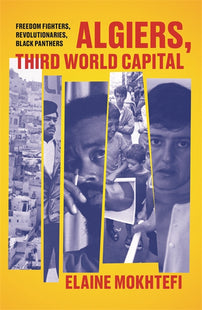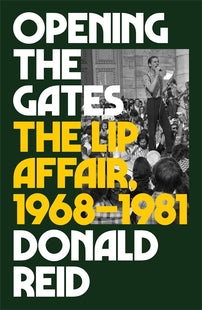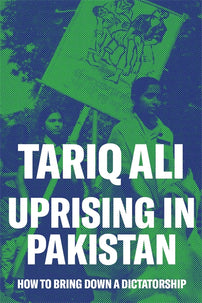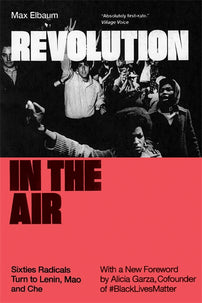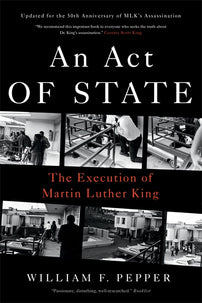Post-68 Student Uprisings and the Rise of the Moroccan Marxist-Leninist Movement
Partly inspired by 1968 student uprisings around the world, the New Left in Morocco emerged as a revolutionary alternative to the traditional Communist parties and the nationalist movement.

"The masks have fallen; let's open up the revolutionary path,” read the statement issued by revolutionary students and intellectuals in Morocco on 30 August 1970. The group had been inspired by the May 1968 student uprisings in France and the victories of revolutionary movements in Vietnam and China, along with the spread of Marxism in the Arab left following the defeat of nationalist projects in 1967. These historical and political conditions contributed to the crystallization of the New Left as a revolutionary alternative to the traditional Communist parties and the nationalist movement. Accordingly, the statement declared the establishment of Ila al-Amam — "Forward!" in Arabic — to be the most influential underground organization of the Moroccan Marxist-Leninist movement (MMLM), calling for a revolution of workers and peasants against the monarchy and its imperialist allies.
Historical premises of MMLM
In 1912 Sultan Abd al-Hafid signed the Protectorate Treaty, thus providing France with full political and economic control of Morocco. Meanwhile, French and Spanish troops launched a brutal military campaign against the revolting tribes in different regions. The colonialist war, known as La Pacification du Maroc, was intended to destroy the tribes and their self-governing systems at the core of the anti-colonialist resistance. Consequently, by 1934 the colonizers eradicated of all forms of resistance from peasants, instead imposing political control of their subordinated partner, the Makhzen regime and its feudal allies, all over the country.
French companies and settlers took control of mining sites and dispossessed the peasants of the nation’s most productive land. As a result, hundreds of thousands of peasants were displaced to the cities to join the labouring workforce, enabling them to take part in the growing popular movement. Under these circumstances the rural resistance was weakened significantly, whereas the changing political and economic conditions brought about a concentrated class struggle between the popular masses, the colonizers and their allies in urban areas.
Power Contest in Post-Independence Morocco
Once Morocco won independence in 1956 the monarchy sought political power and control of the military. The main objective was to dissolve the Moroccan Army of Liberation, which had played a crucial role in armed resistance against the French and Spanish colonizers. An agreement was struck to establish a nationalist government, while the crown prince Hassan ll took control of the military and began integrating most aspects of the resistance into the Royal Armed Forces. In doing so Hassan ll launched an atrocious military campaign to suppress all ongoing struggles, including the uprisings of Rif region and other resistance centres. 1
On an economic level, post-independence policies served the bourgeois agenda and international capital. Once the monarchy and its allied bourgeoisie gained political control, they withdrew all nationalist programs and implemented a neoliberal agenda. Meanwhile, the popular masses endured deteriorating economic and social conditions. All slogans of the nationalist movement collapsed, and faced with such opportunism discontent grew among the masses who felt the need for an alternative.
In the latter half of the 1960s, Marxist ideas gained the floor among Moroccan students and revolutionary intellectuals. Many young students joined the Communist Party of Morocco and its successor, the Party of Liberation and Socialism. However, with the growing struggles in Morocco in 1968 the working class found itself caught between the nationalist petite bourgeoisie and the revisionist communist party, leading to a proliferation of Marxist circles among the youth in particular.
Political Struggle and the Emergence of the New Left in Morocco
The Pan-Arab project’s defeat in 1967 led to a widespread embrace of Marxism within political movements in the Middle East, thus bringing about the emergence of new revolutionary forces. In Morocco, the young revolutionaries were indignant at petit bourgeois nationalism and increasing contradictions among the dominant classes in the post-independence era. Most of them had joined the Party of Liberation and Socialism during the sixties. Others had participated in the May 1968 uprisings in France and could see the potential political force of student movements when combined with workers’ strikes. They returned to Morocco brimming with revolutionary aspirations, attributing great importance to the student movement.
In May 1970, the National Union of Students of Morocco (UNEM) called for a general strike to protest against the visit of Gregorio López-Bravo, the Minister of Foreign Affairs of Francoist Spain, who intended to form an agreement with Moroccan government on the joint exploitation of phosphate sites in Bou Craa, Western Sahara under the sovereignty of Spanish government. The student protests were mainly lead by Marxist militants who successfully blocked the agreement and returned the minister to Spain empty-handed. In the meantime, the Moroccan regime grew determined to suppress the students' movement and launched a huge assault on UNEM. 2
The Role of Morocco’s Student Movement in Political Struggle
In March 1965, UNEM called for a strike to protest against new education legislation limiting the age of school entry to 16 years old. As university and high school students took to the streets, huge sections of the popular masses flooded the streets of Casablanca to protest against the high costs of living. This mass demonstration quickly turned into a popular uprising, resulting in violent suppression at the hands of the army. As a result, the government withdrew the proposed cost increase on basic goods, while the Minister of Education pulled back on education reform. Despite the bloody crackdown against student movement and popular demonstration, the protests of March 1965 constituted a new form of post-independence struggles which would influence the political and social dynamic for several years.
The Rise of Ila al-Amam
The socialisation of Marxism among intellectual and student circles, along with the establishment of Ila al-Amam, can only be understood in the context of the international rise of student movements post-1965. Indeed, the Ila al-Amam was directly influenced by the events of May 1968 in Paris; many militants from Morocco participated in the protests and returned with revolutionary aspirations, galvanized by the knowledge that such protests would be supported by the popular masses and could pose a challenge to the Makhzen.
The first circles of the Marxist movement were assembled within French-Arabic literary magazine Souffles, published in Rabat between 1966 and 1972. 3 Primarily a leftist, intellectual publication, Souffles dealt with political economic and social issues in Morocco and functioned as the main tool for communicating the emerging organization's views within the PLS and student movements, until it was eventually banned by the Hassan ll regime during a crackdown on the Marxist movement.
Ila al-Amam issued its first statement on August 1970. From the beginning, they set the ideological and political grounds of the new organization, adopting Marxism-Leninism while rejecting the bureaucracy which had dominated the Soviet Union during the sixties. Ila al-Amam also considered the main contradictions in Moroccan society to be mainly between the oligarchy, which maintained the power of the state in collaboration with the liberal bourgeoisie and international capitalism, and the proletariat in both urban and rural areas. Moreover, Ila al-Amam considered the masses' educated youth as the intellectual expression of both the proletariat and the popular classes.
Politically, Ila al-Amam believed that the principal enemy was imperialism and its dependent oligarchy in Morocco. With this in mind, the main objective was to achieve a popular movement in Morocco that would bring the peasants and the working masses to power. The instruments of revolution would be based on the workers’ councils, peasants’ councils, and communes of popular masses. Besides, Ila al-Amam's first statement also proposed that revolution in Africa is indispensable in order to successfully build socialism in Morocco and the continent.
Beyond its political and ideological principles, Ila al-Amam rejected the revisionist character of the Party of Liberation and Socialism, which was dependent on USSR bureaucracy. It also described petit bourgeois groups as liberal politicians who took advantage of the national emancipation movement in order to co-opt it with the old regime, using the Moroccan proletariat to serve their own middle class aspirations.
In the course of its political activity, Ila al-Amam established a coalition with another Marxist group, Organization March 23, sometimes referred to as "organization B" in counterpart to Ila al-Amam’s "organization A." In addition to joint meetings and platforms, the coalition formed a united front of progressive students during the 15th congress of UNEM, allowing the young organizations to gain the majority of votes and take leadership of the student organization, thus redefining its political line. UNEM would soon be banned by the regime and subsequently found its president, a member of Ila al-Amam, accused of treason and sentenced to death after fleeing the country. Soon after, a wave of activity within the regime resulted in further arrests of several Ila al-Amam leaders.
Implications and Further Developments
According to Ila al-Amam, students of the popular masses constituted the most progressive vanguard of the proletariat. Lessons learned from the student uprisings of March 1965 in Casablanca, May 1968 in France, and May 1970 in Rabat accumulated enough political arguments for the underground organization to consider student movement as the detonator of contradictions between the regime and the popular masses. This political assessment had affected not only the organization's composition, but its political tactics too, resulting in a focus on propaganda and activity among students.
Under fierce suppression within the regime Ila al-Amam reassessed its strategy, acknowledging the political and organizational errors that had enabled the regime to suppress the movement. Later documents of Ila al-Amam would criticise the central role of the student movement and change the strategies regarding the popular masses. As a result, Ila al-Amam changed its tactics within the student movement to fit with the fatal political condition.
Despite its Marxist focus on the conquest of power by the working class and the peasants, Ila al-Amam came about as a direct result of the student uprisings and was therefore comprised primarily of student groups. This meant that the revolutionary organisation was essentially conditioned by its middle class composition, with its elitist character having manifested during the regime's crackdown on the MMLM. Since 1972 Ila al-Amam has readjusted its strategy and shifted focus from the student movement to labouring forces and the popular masses, directing political activity accordingly. Consequently, new organizational tools were developed in the organization, enabling the establishment of intermediary structures within trade unions and popular organizations. On the ideological level, Ila al-Amam attributed much effort to cultivate Marxism in Moroccan social conditions.
Ghassane Koumiya is a Researcher in Political Anthropology.
Notes
1. See John Waterbury, The Commander of the Faithful: The Moroccan Political Elite: A Study in Segmented Politics (New York: Weidenfeld & Nicolson, 1970).
2. Chebari Abdelmoumen (2011)
3. For detailed information on Souffles, see Kenza Sefrioui, La revue Souffles 1966-1973. Espoirs de révolution culturelle au Maroc (Casablanca: Sirocco Editions, 2013).
Additional references
Majdi Majid, Les luttes de classes au maroc depuis l´independance (Rotterdam: Hiwar Editions, 1987).
[book-strip index="1" style="display"]
